
Modern PVC Panel Design for Ceiling – Stylish & Durable Ceiling Solutions for Hall
- Introductory overview of PVC panel design for ceilings, including definitions and value proposition
- The technological advantages of PVC panel ceiling designs and current market data
- Comparative analysis of leading manufacturers in the PVC ceiling panel industry
- Customization options and trends in pvc panel for ceiling design
- Showcase of notable application cases with before-and-after insights
- Installation methodologies and maintenance best practices
- Future trends, innovations, and summary on pvc panel design for ceiling

(pvc panel design for ceiling)
PVC Panel Design for Ceiling: The Modern Definition and Value Insights
In recent years, PVC panel design for ceiling has gained substantial preference among architects, interior designers, and residential customers alike. Polyvinyl chloride (PVC) ceiling panels are lightweight, water-resistant, and fire-retardant materials engineered for versatile and aesthetic ceiling applications. Their modularity and cost efficiency position them as a superior solution compared to traditional options like gypsum or wooden ceilings.
Their popularity stems from not only fundamental durability but also unique visual possibilities, offering a spectrum from sleek, minimalist profiles to ornate textured patterns. The adaptation rate of PVC panel ceiling design for hall and living spaces has escalated by approximately 35% across commercial and residential sectors globally, according to a 2023 industry report. This is largely attributable to the product's eco-friendliness—most panels contain over 40% recycled raw material—and its rapid, mess-free installation process.
The versatility of PVC panel ceiling design targets both new construction and renovation, enabling property owners to upgrade the look and functionality of their interiors without prolonged disruption. As a design asset, PVC panels excel in halls, kitchens, bathrooms, office lobbies, and more, serving both utility and style with equal measure.
Technology and Data: Advantages Shaping Modern Ceilings
The technology behind PVC panel for ceiling design is defined by innovation in manufacturing processes, enabling panels to achieve optimal flexibility, resilience, and finish. These panels exhibit impressive water resistance (with absorption rates below 0.5%), making them perfectly suited for environments prone to moisture, such as bathrooms and kitchens.
Additionally, fire-safety standards are rigorously upheld; PVC ceiling panels typically feature a flame spread index (FSI) below 25, far outperforming traditional materials. Installation time is drastically reduced—most 2x2 meter ceiling layouts can be completed in under four hours, representing up to 60% less labor time compared to gypsum-based solutions.
According to 2022-2023 market analytics, the global demand for PVC ceiling panels is projected to expand at a CAGR of 7.8%, positioning the segment as a dynamic driver within the broader ceiling materials market. Among end users, the maintenance cost reduction—averaging 40% savings over conventional ceilings—continues to be a defining benefit.
| Property | PVC Ceiling Panels | Gypsum Boards | Plaster Ceilings | Wood Panel Ceilings |
|---|---|---|---|---|
| Water Resistance (%) | 99.5 | 50 | 30 | 65 |
| Fire Rating (FSI) | <25 | 45 | 60 | 35 |
| Average Installation Time (sqm) | 1 hour | 2.5 hours | 3 hours | 4 hours |
| Estimated Lifespan | 20+ years | 15 years | 10-12 years | 15-20 years |
| Eco-friendly Content | 40% recycled | 10% recycled | 0% | Depends on sourcing |
| Annual Maintenance Cost | Low | Medium | High | Medium |
| Design Variety | Extensive | Moderate | Low | Limited |
Comparison of Leading Manufacturers: Who Stands Out?
The market for pvc panel ceiling design is led by several reputable manufacturers, each offering distinctive features, price points, and support services. Among the top brands are Armstrong Ceiling Solutions, Ecoste, and Decora, with regional players emerging in key growth markets of Asia-Pacific and the Middle East.
Armstrong Ceiling Solutions stands out for precision engineering, fire compliance certifications, and a global logistics network. Their product range emphasizes high-end finishes suitable for both commercial and premium residential installations. Ecoste, in contrast, focuses on sustainable production methodologies, offering panels with up to 85% recycled material content. Decora is known for rapid delivery and affordable price points, making them accessible to a broader market segment.
The following table provides a comparative overview between the top three manufacturers regarding panel quality, design range, sustainability commitment, and after-sales service:
| Manufacturer | Quality Grade | Design Catalog Size | Sustainability | After-Sales Support | Global Warranty |
|---|---|---|---|---|---|
| Armstrong | Premium | 150+ styles | 60% recycled | 24/7 Online & Onsite | 10 years |
| Ecoste | High | 110+ styles | 85% recycled | Online Helpdesk | 7 years |
| Decora | Standard | 85 styles | 45% recycled | Email Support | 5 years |
Buyers are encouraged to match their preferences and project requirements with the specific strengths of these market leaders for optimal long-term outcomes.
Customization: Tailoring PVC Panels to Unique Ceiling Designs
Personalization has become an integral aspect of modern pvc panel for ceiling design projects. The flexibility to choose sizes, textures, surface finishes, and even inlay options distinguishes PVC panels from most competing solutions. Popular customization directions encompass high-gloss, matte, wood grain, metallic, and patterned surfaces tailored to harmonize with specific themes.
Technological innovations, such as digital printing and laser embossing, have further expanded the possibilities—users can now commission bespoke motifs, brand logos, or even photorealistic artworks for their ceiling installations. According to recent design surveys, over 68% of commercial landlords opt for custom or semi-custom panel arrangements to create a signature interior experience and reinforce brand identity.
Color matching services, edge profiling, acoustic enhancements, and integrated lighting channels are increasingly requested as a part of premium customization offerings. These choices enable architects and designers to seamlessly integrate PVC ceiling solutions into a range of environments, from high-traffic lobbies to residential lounge areas and retail interiors.
Application Examples: Installations Driving Impact
The functional and aesthetic merits of PVC panel ceiling design for hall and commercial spaces are best illustrated through actual implementations. In one notable corporate headquarters overhaul, replacing traditional ceilings with PVC panels reduced both thermal transfer and sound echo by over 30%, all while modernizing the visual language of the workspace.
Retail chains have documented a 25% boost in ambient lighting efficiency after switching to reflective, high-gloss PVC panels—a factor linked to increased customer dwell times. In the hospitality sector, bathrooms and spa areas have reported drastic reductions in mold and maintenance issues, thanks to the non-porous and waterproof nature of PVC ceiling installs.
Residential case studies highlight enhanced aesthetic consistency and ease of cleaning, particularly in homes with open-plan architectures. The integration of hidden LED strip lights with suspended PVC panels has emerged as a trend, offering both dramatic effects and improved energy utilization.
| Application | Key Benefits | Performance Metrics | End-user Feedback |
|---|---|---|---|
| Corporate Office Hall | Reduced echo, modern look | Sound absorption up 36% | “Transformed workspace atmosphere” |
| Retail Outlet | Increased lighting efficiency | Ambient Lux +25% | “Boosted display appeal” |
| Luxury Residence Hallway | Stain resistance, custom aesthetics | Maintenance hours cut by 40% | “Flawless finish, easy care” |
Installation and Maintenance Guidelines
Efficient installation is a pivotal advantage of PVC panels over traditional ceiling systems. Panels typically mount to lightweight aluminum or PVC grids, allowing for rapid assembly. Key requirements include a flat, clean substrate and accurate measurements—each panel interlocks with tongue-and-groove edges, eliminating visible fasteners for a seamless finish.
Most residential projects require only standard tools like a saw, drill, and leveling equipment, streamlining on-site logistics and reducing downtime. For commercial and large-scale installations, modular panel kits are available, which further accelerate assembly without sacrificing structural integrity.
Maintenance best practices are straightforward: regular dusting with microfiber cloths, periodic cleaning with mild detergent, and immediate wipe-down of spills to prevent discoloration. PVC panels do not require painting, refinishing, or specialized chemical treatments, providing long-term savings on both effort and cost. Users should avoid abrasive pads and strong solvents to preserve surface quality.
Forward-Looking Trends and Closing Perspective on PVC Panel Design for Ceiling
As building and design standards evolve, the future of pvc panel design for ceiling is oriented towards further integration of smart technologies, such as ambient lighting control and enhanced acoustic modules. The ongoing drive for circular economy practices will see manufacturers increasing their use of recycled input material, with projections indicating that up to 70% recycled content could become the norm within five years.
Another emerging direction is the fusion of PVC panels with IoT-enabled building systems, offering occupants not only modern aesthetics but also actionable environmental data through embedded sensors. In the premium design space, three-dimensional surface profiling and interactive, color-shifting finishes are expected to set new benchmarks.
In summary, PVC ceiling panels have solidified their reputation as a preeminent solution for modern interior environments. Their unique blend of durability, flexible aesthetics, and competitive installation/maintenance economics position them as a strong contender for those seeking to elevate interior spaces—whether for halls, living areas, or high-demand commercial venues. Continuous product innovation ensures that both performance and style will keep pace with the dynamic expectations of new builds and renovations alike.
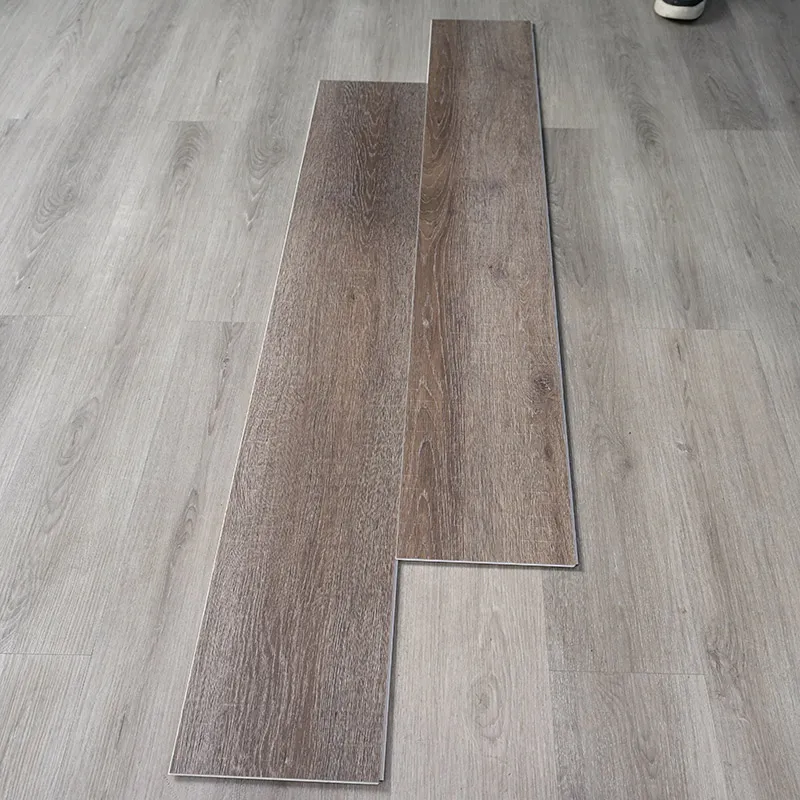
(pvc panel design for ceiling)
FAQS on pvc panel design for ceiling
Q: What are the advantages of using PVC panel design for ceiling?
A: PVC panel ceiling designs are lightweight, moisture-resistant, and easy to maintain. They offer a modern look and are available in various styles. Installation is usually quick and cost-effective.Q: How do I choose the best PVC panel ceiling design for my hall?
A: Consider the size and lighting of your hall when selecting a PVC panel design. Choose colors and patterns that complement your interior décor. Consulting with a ceiling design expert can help achieve the best results.Q: Are PVC panel ceiling designs suitable for all types of rooms?
A: Yes, PVC panel ceilings are versatile and can be used in halls, bedrooms, kitchens, and bathrooms. Their moisture resistance makes them ideal for humid areas. Always select appropriate designs based on room function.Q: How do I clean and maintain a PVC panel for ceiling design?
A: PVC ceiling panels can easily be cleaned using a damp cloth and mild detergent. Regular dusting keeps them looking new. Avoid abrasive cleaners to prevent surface scratches.Q: Can PVC panel ceiling designs be customized?
A: Yes, many suppliers offer customizable PVC panel designs to fit your specific requirements. You can choose colors, textures, and patterns for a personalized look. Custom designs are excellent for creating unique spaces.-
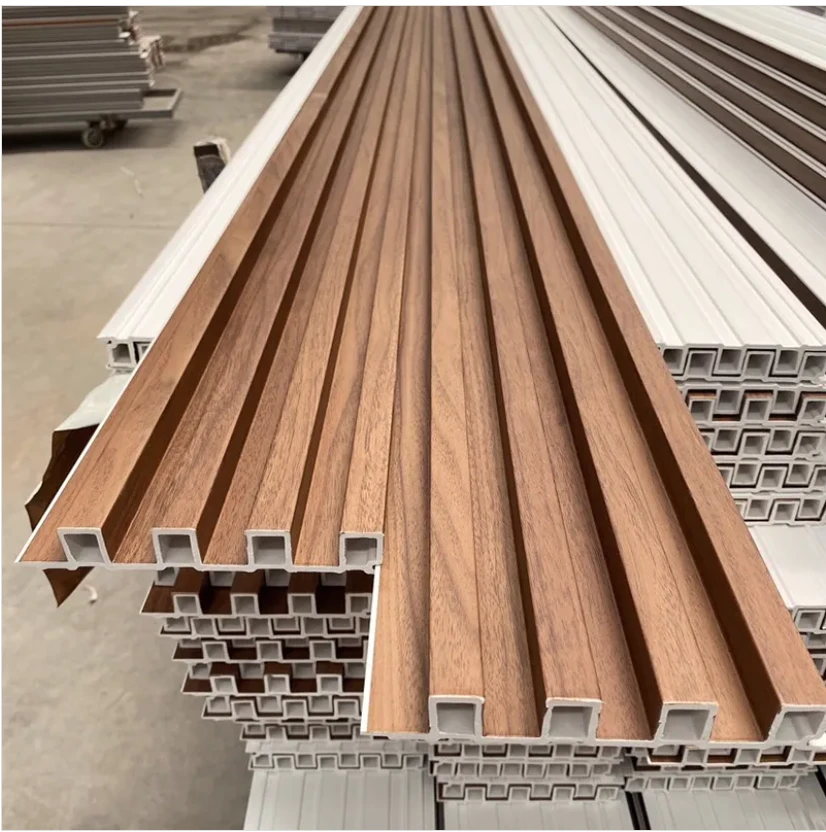 WPC Wall Panel Outdoor Weather ResistanceModern exterior design solutions increasingly utilize WPC exterior wall cladding for its exceptional durability and aesthetic appeal.Read More >
WPC Wall Panel Outdoor Weather ResistanceModern exterior design solutions increasingly utilize WPC exterior wall cladding for its exceptional durability and aesthetic appeal.Read More >Aug 05 2025
-
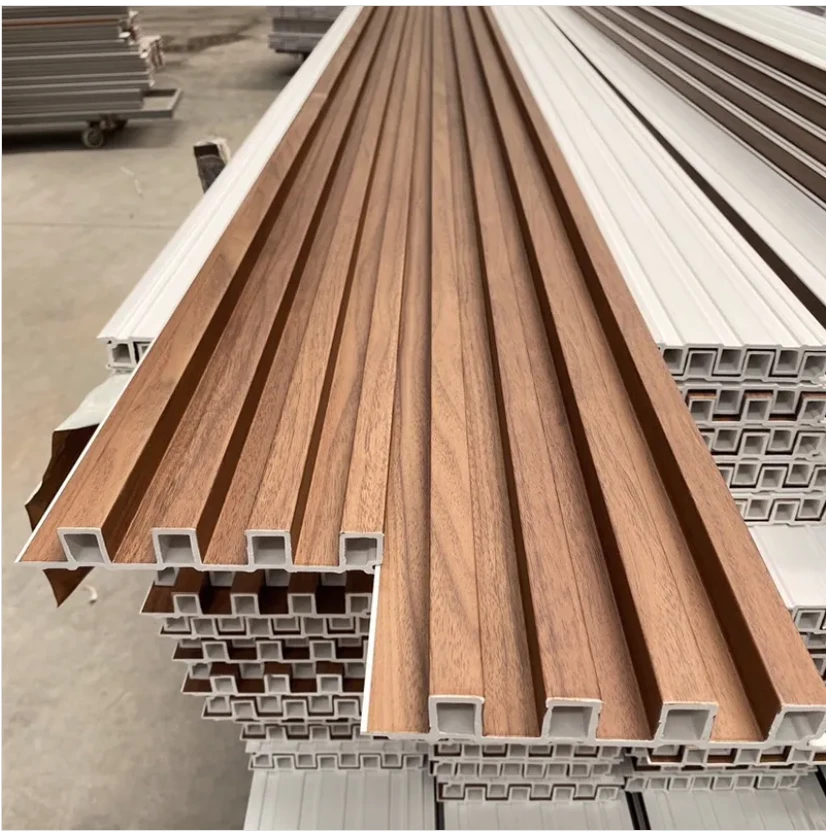 WPC Wall Panel for Wine CellarsThe ideal wine cellar requires specialized wall solutions that perfectly balance functionality and aesthetics.Read More >
WPC Wall Panel for Wine CellarsThe ideal wine cellar requires specialized wall solutions that perfectly balance functionality and aesthetics.Read More >Aug 05 2025
-
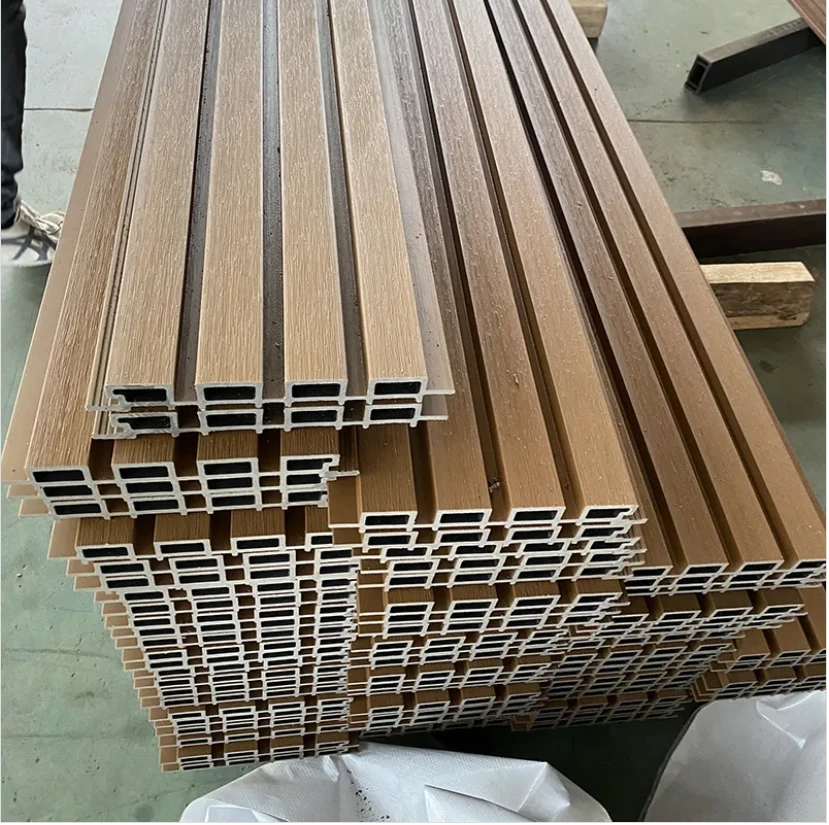 WPC Wall Panel Expansion GapsProfessional installation of WPC wall cladding requires meticulous attention to expansion gap requirements to ensure long-term durability and aesthetic performance.Read More >
WPC Wall Panel Expansion GapsProfessional installation of WPC wall cladding requires meticulous attention to expansion gap requirements to ensure long-term durability and aesthetic performance.Read More >Aug 05 2025
-
 SPC Flooring Stone Look Outdoor UseOutdoor living spaces now benefit from durable and stylish SPC floor tiles that combine the beauty of natural stone with exceptional performance.Read More >
SPC Flooring Stone Look Outdoor UseOutdoor living spaces now benefit from durable and stylish SPC floor tiles that combine the beauty of natural stone with exceptional performance.Read More >Aug 05 2025
-
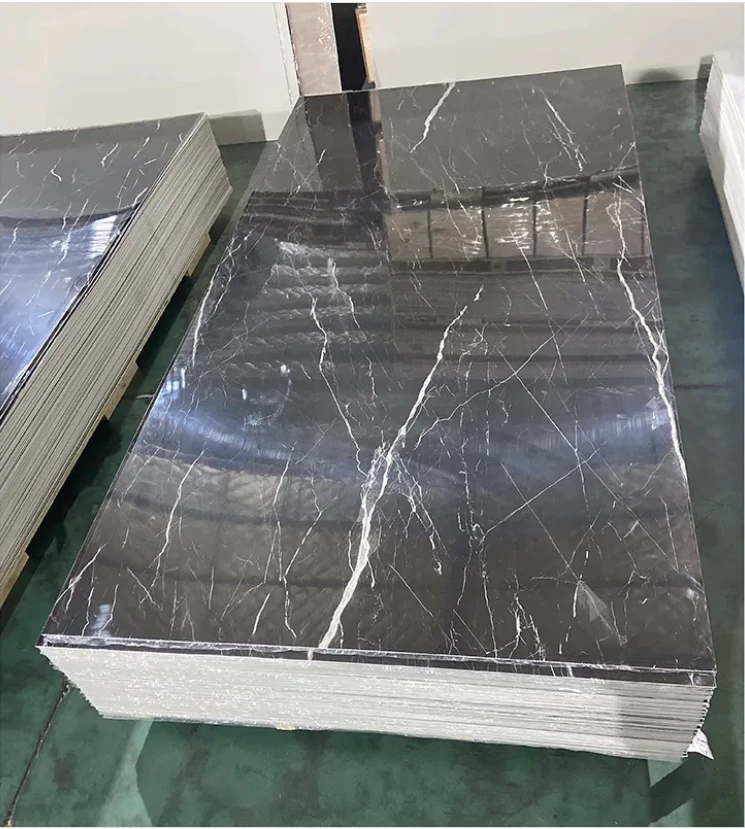 Marble Effect PVC Panels Color OptionsModern interior design increasingly utilizes marble effect PVC panels for their luxurious appearance and practical benefits.Read More >
Marble Effect PVC Panels Color OptionsModern interior design increasingly utilizes marble effect PVC panels for their luxurious appearance and practical benefits.Read More >Aug 05 2025




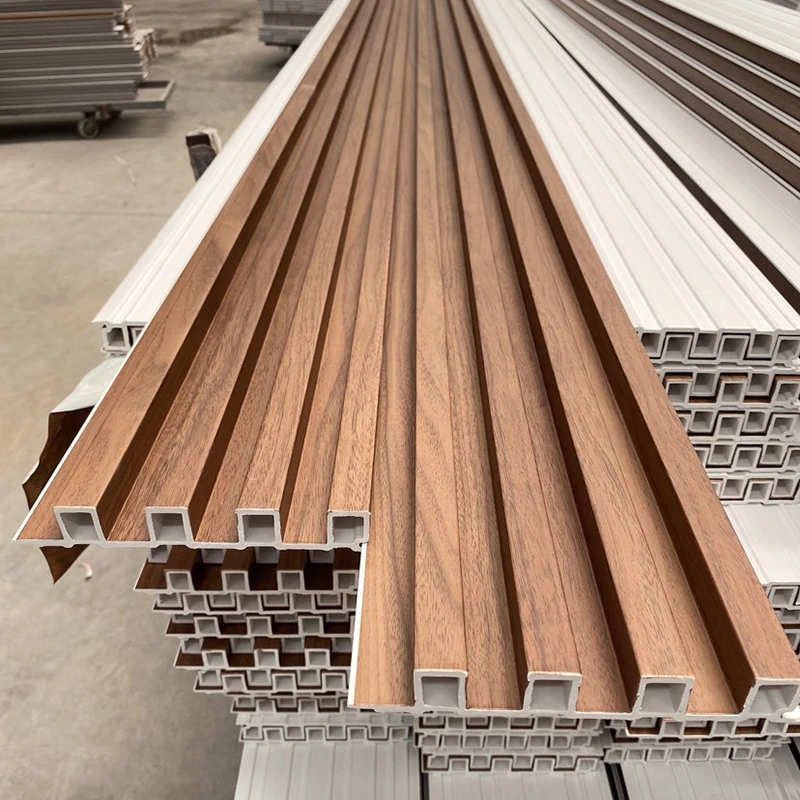
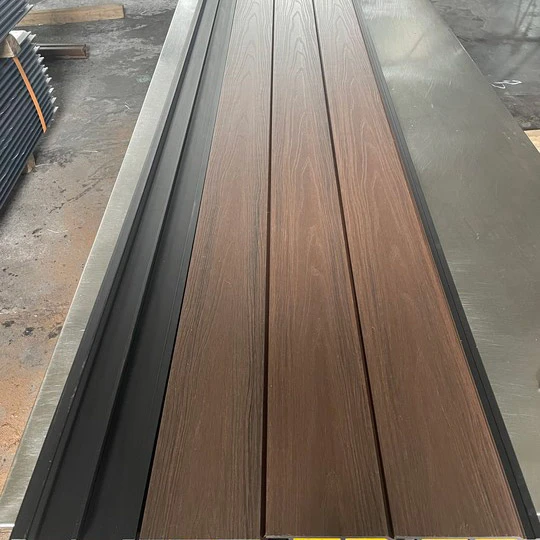

 +86 31185293045
+86 31185293045  qian@ss711.com
qian@ss711.com 















